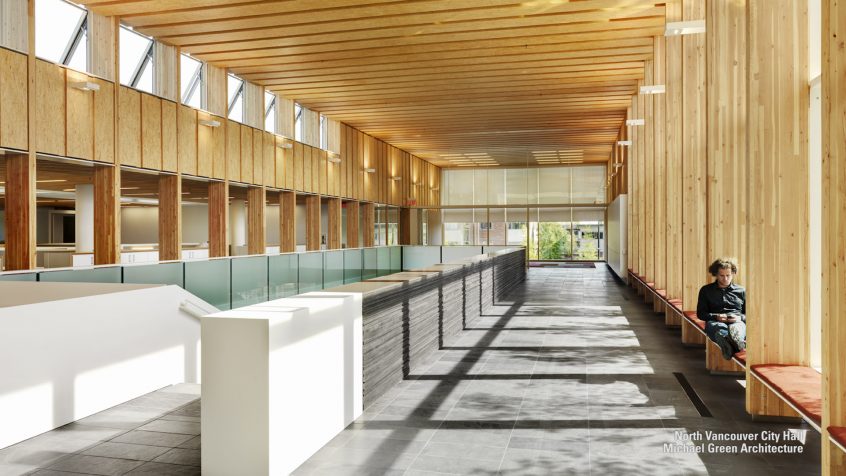Of the many issues that could affect forest products and timberland management, the looming Congressional battle over federal timber reform has gained most of the attention, as described in our blog post on Nov. 15.
But other federal legislation affecting the forest products industry is generating strong support as well as controversy. Alex Ulam writes in AN, The Architect’s Newspaper, that the 2017 Timber Innovation Act has strong backing but also a heavy campaign against it by adversaries that view it as propping up one industry over others. The legislation seeks to make forests products innovations such as cross-laminated timber far more acceptable and prevalent in new building and high-rise construction across the country.
As Ulam describes it, the legislation “would provide funding for research into innovative wood materials and mass timber structures above 85 feet. The bill’s proponents are hoping that it will be an impetus for transforming cities and towns across the country with a bevy of mid-rise and high-rise mass timber buildings.”
Advocates take issue with claims by opponents from the concrete and steel industries that wood is less safe.
From Ulam:
The wood products industry, the U.S. Forest Service, and other advocates claim that technological advances make the new generation of tall timber buildings more fire resistant. In fact, according to Dr. Patricia A. Layton, director of the Wood Utilization + Design Institute at Clemson University, that is because of the way it chars in a fire: By insulating its interior, an exposed wood beam can actually be structurally stronger than a steel one. “Steel loses its strength at a lower temperature than does wood,” she explained. “If you expose concrete or steel it is combustible, and it does feel the effects of fire.”
On the positive side, supporters of the legislation, the forest products industry and many in professions such as architecture and engineering say buildings built with wood cross-laminated timber and other innovations have significant advantages and generate substantial economic and environmental benefits. In the December 2017 issue of The Atlantic magazine, “The Weird, Wooden Future of Skyscrapers” by Amanda Kolson, Hurley describes some the benefits from buildings built with “mass timber” construction such as Framework, a 12-story mixed-use tower being built in Portland, Oregon, that “will be the country’s tallest human-occupied all-wooden structure.”
Hurley:
“Mass timber’s biggest advantage may be environmental. Buildings are by some estimates responsible for a third of global greenhouse-gas emissions. Much of a building’s carbon footprint results from its lifetime energy use, but another big part derives from its construction. The manufacture of concrete and steel accounts for an estimated 10 percent of greenhouse-gas emissions. Trees, however, are “carbon sinks”—they absorb and hold carbon until they decompose or are burned. According to a study in the Journal of Sustainable Forestry, substituting wood for other materials used in buildings and bridges could prevent 14 to 31 percent of global carbon emissions.
Hurley notes that a Canadian architectural firm is proposing a 35-story tower in Paris from mass timber construction, and construction of a 24-story wooden building is underway in Vienna.
Ulam describes additional efforts in Washington, D.C. on mass timber construction:
“Congress is not the only place in Washington where the merits of tall mass timber are being explored. Steve Marshall, assistant director at the U.S. Forest Service, has been working with the International Code Council to develop standards for the use of CLT. In addition, the U.S. Department of Defense has been conducting blast tests with CLT to determine whether it is an appropriate material to use on its bases.
“Marshall said there are other potential sources for government support for CLT projects aside from direct funding from the Timber Innovation Act. In the third week of October, his agency will be releasing a new round of grants of up to $250,000 under its Wood Innovations Grants program. Next year, the Forest Service is planning on making $8 million available under the same program, and applications will be due by mid-January.”
Since the building sector in the US consumes nearly half the energy produced and is responsible for half the carbon emissions, mass timber construction with a renewable and sustainable resource that actually stores carbon and is as strong pound-for-pound as steel will not only benefit the industry but the entire country.
